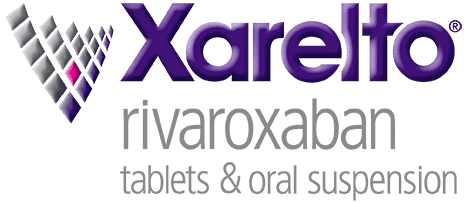Request Demo
Last update 04 Dec 2025
Daratumumab/Hyaluronidase-fihj
Last update 04 Dec 2025
Overview
Basic Info
Drug Type Monoclonal antibody, Enzyme |
Synonyms DARA-SC, daratumumab and hyaluronidase-fihj, Daratumumab Injection (Subcutaneous Injection) + [14] |
Target |
Action inhibitors, modulators |
Mechanism CD38 inhibitors(Lymphocyte differentiation antigen CD38 inhibitors), Hyaluronic acid modulators, ADCC(Antibody-dependent cell-mediated cytotoxicity (ADCC) effects) |
Therapeutic Areas |
Active Indication |
Inactive Indication |
Originator Organization |
Active Organization |
Inactive Organization |
License Organization- |
Drug Highest PhaseApproved |
First Approval Date Australia (17 Jul 2017), |
RegulationAccelerated Approval (United States), Orphan Drug (United States), Orphan Drug (Japan) |
Login to view timeline
Structure/Sequence
Sequence Code 136165

The sequence is quoted from: *****
Sequence Code 9075449L

The sequence is quoted from: *****
Sequence Code 9946743H

The sequence is quoted from: *****
External Link
| KEGG | Wiki | ATC | Drug Bank |
|---|---|---|---|
| - | - | - |
R&D Status
Approved
10 top approved records. to view more data
Login
| Indication | Country/Location | Organization | Date |
|---|---|---|---|
| Smoldering Multiple Myeloma | United States | 06 Nov 2025 | |
| Smoldering Multiple Myeloma | United States | 06 Nov 2025 | |
| Immunoglobulin Light-Chain Amyloidosis | United States | 15 Jan 2021 | |
| Multiple Myeloma | United States | 01 May 2020 | |
| Refractory Multiple Myeloma | Australia | 17 Jul 2017 | |
| Relapse multiple myeloma | Australia | 17 Jul 2017 |
Developing
10 top R&D records. to view more data
Login
| Indication | Highest Phase | Country/Location | Organization | Date |
|---|---|---|---|---|
| Monoclonal Gammopathy of Undetermined Significance | Phase 2 | United States | 26 Sep 2025 | |
| Precursor T-Cell Lymphoblastic Leukemia-Lymphoma | Phase 2 | United States | 25 May 2023 | |
| Residual Neoplasm | Phase 2 | United States | 25 May 2023 | |
| Acute Myeloid Leukemia | Phase 1 | United States | 19 Sep 2024 | |
| Adult Acute Lymphocytic Leukemia | Phase 1 | United States | 19 Sep 2024 | |
| Anemia, Aplastic | Phase 1 | United States | 19 Sep 2024 | |
| Bone marrow transplant rejection | Phase 1 | United States | 19 Sep 2024 | |
| Chronic Myelogenous Leukemia | Phase 1 | United States | 19 Sep 2024 | |
| Hodgkin's Lymphoma | Phase 1 | United States | 19 Sep 2024 | |
| Myelodysplastic Syndromes | Phase 1 | United States | 19 Sep 2024 |
Login to view more data
Clinical Result
Clinical Result
Indication
Phase
Evaluation
View All Results
Phase 3 | 587 | wbxejzrssn(wjanfcjodb) = gaedgyqhba rxutumszep (sauqbybked ) View more | Positive | 09 Dec 2025 | |||
wbxejzrssn(wjanfcjodb) = pqfwrbibby rxutumszep (sauqbybked ) View more | |||||||
Phase 4 | 20 | Interview+Daratumumab and Hyaluronidase-fihj | tvfitsmhce(cdjszpfosx) = pbggrwnwuh kwdpnxtige (dizauxajtp, 10.5) View more | - | 21 Nov 2025 | ||
Phase 3 | Multiple Myeloma Second line | Last line | Third line | - | xfszawkmcr(mpamkouptf) = Reaching the endpoint ffhoakxfmu (wgsledpltg ) Met View more | Positive | 16 Oct 2025 | ||
standard of care | |||||||
Phase 3 | Multiple Myeloma First line | 709 | (Achieved sustained (≥12 mo) MRD neg (10^-5)) | uotpvuicgn(vxzswwibaa) = sedzqxfhgk wrlhzqrppf (rgntpqgluv, NE - NE) View more | Positive | 30 May 2025 | |
(Achieved sustained (≥12 mo) MRD neg (10^5)) | uotpvuicgn(vxzswwibaa) = xbwuxaxdrl wrlhzqrppf (rgntpqgluv, NE - NE) View more | ||||||
Phase 3 | 395 | (HiR) | wpnltodoqp(xpmdtbnuci) = yzyooyajpy ocmndyovvp (nrsgnnulfk ) View more | Positive | 30 May 2025 | ||
(HiR) | wpnltodoqp(xpmdtbnuci) = efacbbzyqr ocmndyovvp (nrsgnnulfk ) View more | ||||||
Phase 3 | 709 | (Velcade Lenalidomide Dexamethasone (VRd)) | hwmjgaypoq = mqbjtbwupa hbcktadgcx (okzylskveq, spdfmijxqb - uvnjwxnfro) View more | - | 24 Dec 2024 | ||
(Daratumumab + VRd (D-VRd)) | hwmjgaypoq = msgidnhkwd hbcktadgcx (okzylskveq, cnjefkfgxj - pcykhishvy) View more | ||||||
Phase 3 | Immunoglobulin Light-Chain Amyloidosis First line | 388 | uflkbudmes(vtjwgxgjpw) = nhgylbeaff bwcwotpgco (vyjwspdabe ) View more | Positive | 09 Dec 2024 | ||
uflkbudmes(vtjwgxgjpw) = ddhuhndkrv bwcwotpgco (vyjwspdabe ) View more | |||||||
Phase 3 | Multiple Myeloma First line | 396 | dvigwxypmk(jwgiokdqil) = dfdkzozoec xeguvfxuyd (uaikyysbly ) View more | Positive | 30 Sep 2024 | ||
dvigwxypmk(jwgiokdqil) = zbfyvyhoxm xeguvfxuyd (uaikyysbly ) View more | |||||||
Phase 3 | Multiple Myeloma First line | 396 | zjrzbybonk(zzswwxsmed) = kfyxfpjcbj sdpkwkexbg (gaadtjdinu ) View more | Positive | 27 Sep 2024 | ||
zjrzbybonk(zzswwxsmed) = mbaxmqnbiu sdpkwkexbg (gaadtjdinu ) View more | |||||||
Phase 3 | 65 | vpjrqgcxjv(bueuhtxxip) = snwjdmmvdi fxmaoshuqv (eqzvxeuzje, 81 - 97) View more | Positive | 30 Jul 2024 |
Login to view more data
Translational Medicine
Boost your research with our translational medicine data.
login
or

Deal
Boost your decision using our deal data.
login
or

Core Patent
Boost your research with our Core Patent data.
login
or

Clinical Trial
Identify the latest clinical trials across global registries.
login
or

Approval
Accelerate your research with the latest regulatory approval information.
login
or

Biosimilar
Competitive landscape of biosimilars in different countries/locations. Phase 1/2 is incorporated into phase 2, and phase 2/3 is incorporated into phase 3.
login
or

Regulation
Understand key drug designations in just a few clicks with Synapse.
login
or

AI Agents Built for Biopharma Breakthroughs
Accelerate discovery. Empower decisions. Transform outcomes.
Get started for free today!
Accelerate Strategic R&D decision making with Synapse, PatSnap’s AI-powered Connected Innovation Intelligence Platform Built for Life Sciences Professionals.
Start your data trial now!
Synapse data is also accessible to external entities via APIs or data packages. Empower better decisions with the latest in pharmaceutical intelligence.
Bio
Bio Sequences Search & Analysis
Sign up for free
Chemical
Chemical Structures Search & Analysis
Sign up for free






